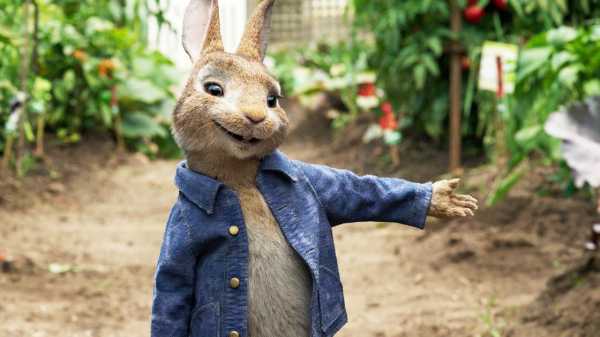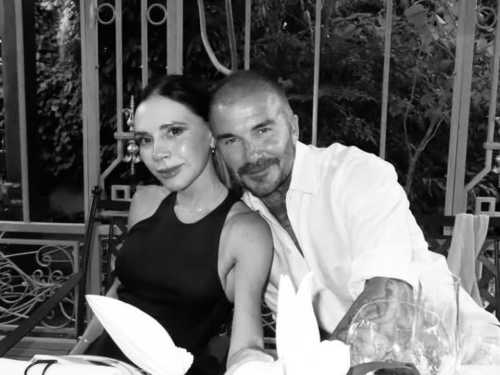
In 1936, Walt Disney approached Beatrix Potter with a proposal: he
wished to make an animated movie based on “The Tale of Peter Rabbit,”
the classic children’s story, from 1902, with which she had begun her
career. Potter’s biographers report that she turned Disney down, saying
that her illustrations weren’t precise enough to be blown up to
big-screen size, though a canny wish to hold on to the copyright of her
drawings may have also been part of her calculus.
It’s safe to assume that, whatever Disney imagined doing with Potter’s
story, he would not have followed the path chosen by the makers of
“Peter Rabbit,” the new movie from Sony, which was released in the U.S.
earlier this month and débuts in the U.K. in March. “Peter Rabbit”
largely dispenses with Potter’s illustrations, opting instead for C.G.I.
animation. The movie, which was directed by Will Gluck and written by
Gluck and Rob Lieber, similarly dispenses with everything that makes
Potter’s books great, instead substituting everything that makes so many
contemporary kids’ movies mediocre. Even if it is slightly less vile
than its much denigrated
trailer promised—a clip showing Peter Rabbit twerking at a houseparty suggested
that its makers were aiming for “Animal House,” with animals—the movie
remains an object lesson in how not to adapt a beloved volume to the
screen.
Since its release, “Peter Rabbit” has gained mostly unwelcome attention,
for its distasteful comic
treatment of food allergies. The film’s villain, Thomas McGregor, starts out as a
persnickety manager of the toy department at Harrods, in London, before
being exiled to the Lake District, in Cumbria, in the north of England,
where he has inherited the farm of his great-uncle, Mr. McGregor, whom
we see suffering a fatal heart attack. Thomas has also inherited his
great-uncle’s antipathy to rabbits, and the territorial warfare between
human and nonhuman residents culminates with Peter and his family,
having discovered that Thomas is allergic to blackberries, pelting their
enemy with the fruit, inducing anaphylactic shock. Parents of children
with food allergies quickly complained that their offspring had been
traumatized by the scene, in which it at first appears that the attack
may have been fatal; they demanded an apology from Sony, which,
appropriately enough, delivered one. (Predictably, the “can’t take a
joke” crowd emerged on Twitter, decrying political correctness.)
But, really, Sony should be apologizing to all of Potter’s admirers, and
perhaps also to Potter’s fictional characters for good measure. Peter
Rabbit, voiced by James Corden, in hashtag-worthy clichés—“We got
this!”—and an inexplicable London accent, is a murderous yob, who brags
about killing the elder Mr. McGregor. (There is a nasty moment when
Peter pokes the man’s eye, to see if he’s dead.) Peter’s sister
Cottontail is so twisted—in an interview, Daisy Ridley, who provided her
voice, described her as “mental”—that a diagnosis of myxomatosis would
seem to be in order. The sparrows who, in the book, flutter around Peter
when he is trapped in some netting in Mr. McGregor’s garden and “implore
him to exert himself”—vocabulary that no children’s author today would
dare employ—are the object of an unfunny standing sight gag in which
they are flattened and scattered by Peter and friends as they rush
heedlessly by. Mrs. Tiggy-Winkle, a hedgehog, suffers the indignity of
her quills flying off her in a fusillade when she bites an electric
fence. And so on.
But the central problem is not that the movie indulges in violence and a
puerile sense of humor—within minutes of the opening, Peter pokes a
carrot in the elder Mr. McGregor’s plumber’s crack—that is at odds with
Potter’s subtler wit. Rather, the movie’s essential failing is that
Gluck and Lieber, in seeking to compensate for what they have perceived
as Potter’s timidity toward antic slapstick, and in replacing the
fable-like simplicity of her stories with a knowing veneer of
contemporaneity, have overlooked the suggestive darkness at the core of
Potter’s work. The author’s genius was her ability to straddle the
divide between anthropomorphizing her creatures and conveying their
essentially alien nature. In her telling, Peter Rabbit breaks into Mr.
McGregor’s garden in part because he is disobedient, and defiant of his
mother’s warnings to avoid the fate of his father, who was baked in a
pie by Mrs. McGregor. In this naughtiness, Peter is like a child,
utterly recognizable to his young human admirers. But Peter also breaks
into the garden because he is a rabbit, and it is in a rabbit’s
essential nature to dig up carrots wherever he can.
All of Potter’s animals have this duality: they wear clothes, and live
in houses, and use teacups, and, at the same time, they remain utterly
true to their animal essence. The squirrels in “The Tale of Squirrel
Nutkin” build rafts and paddles to row across the water to Owl Island;
there, they also present the owl there, Old Brown, with three dead mice,
a tasty treat that makes the story sit in uncomfortable conjunction with
the Potter tales that take mice as their protagonists. The initial charm
of Potter’s illustrations is deceptive; in her world, nature is red in
tooth and claw. In the movie, however, nature is colored with wink and
smirk. It is full of self-referential nods—Peter refers to his own
“character flaw”—and frat-boy transpositions, such as the moment when,
having broken into Mr. McGregor’s garden, Peter deals out lettuce leaves
like a high roller making it rain in Vegas. Peter Rabbit is made all too
human. The nasty gratification that he takes in seeing Mr. McGregor die
may be explicable as that of a vengeful son who rejoices in seeing his
own father’s killer killed, but it is not at all a rendering of a
persuasively animal trait.
Presumably, the director and writer felt the need to raise the emotional
stakes—in the book, the pie-related fate of Mr. Rabbit is a cautionary
tale rather than an instigating tragedy. And yet Potter could convey the
violent amorality of the natural world as chillingly and affectingly as
any author whose works have not been repurposed into soft toys and
baby-bib decals. In “The Tale of Mr. Tod,” from 1912, she set out to
write about “disagreeable people,” having written many books about “well
behaved” ones. Mr. Tod is a fox who, understandably, makes the rabbits
very uncomfortable—“They could smell him half a mile off”—and Tommy
Brock is a badger, who, Potter writes ominously, “did occasionally eat
rabbit-pie; but it was only very little young ones only occasionally.”
With that, the stage is set: when Peter Rabbit’s nephews, Benjamin
Bunny’s children, are being watched over by their neglectful
grandfather, Mr. Bouncer, Tommy Brock steals them away. “He’s bagged my
family,” Benjamin Bunny cries, with the plausible anguish of a parent,
animal or otherwise, at the loss of an offspring. Had Gluck and Lieber
taken the Tommy Brock route—had they explored the real violence of
Potter’s natural world, rather than relying on mean-spirited
slapstick—they might have created a movie that built upon its original,
while remaining true to it. (Such a thing is possible even with the most
beloved of children’s literature: the
“Paddington”
movies are a worthy successor to Michael Bond’s books, updating them in
a manner that deepens the protagonist’s character while imbuing his
story with contemporary relevance.) But, for the most part, “Peter
Rabbit” shies away from what makes animals strangely distinctive, and
relies on what makes humans overly familiar.
The movie does, however, make one attempt at incorporating a
specifically leporine characteristic. As Bea—the movie’s updated
incarnation of Beatrix Potter, played with valiant good humor by Rose
Byrne—tries to convey to Thomas McGregor the complexity of rabbit
relations, she explains that rabbits apologize by touching foreheads.
This is a recurring motif, and it ultimately provides the most moving
emotional note in the movie: its attempt at a warmhearted conclusion.
“At least we learn one thing: Rabbits touch heads to apologize,” Jane
Horwitz noted in a
review of the film, for the Washington Post. As it turns out, though, the movie doesn’t get
that quite right, either. Rabbits’ brains aren’t sufficiently complex to
allow for apologizing, a social-emotional interaction takes a certain
amount of cognitive evolution. It’s true that a rabbit that is
exhibiting submissive behavior will make himself as small as possible by
crouching and tucking his head down. But it’s also the case that when a
rabbit lowers his head he may be expressing dominance through a request
for grooming, rather than expressing submission. “Think of Her Majesty
the Queen offering her hand to somebody to be kissed,” Ros Lamb, of the
Rabbit Welfare Association and Fund, in Britain, said. “The rabbit is
inviting another rabbit to groom its head, and in doing that it’s saying,
‘You may kiss me’ rather than, ‘I am sorry for offending you.’ ” It
sounds strangely like something a Hollywood exec might do.
Sourse: newyorker.com






